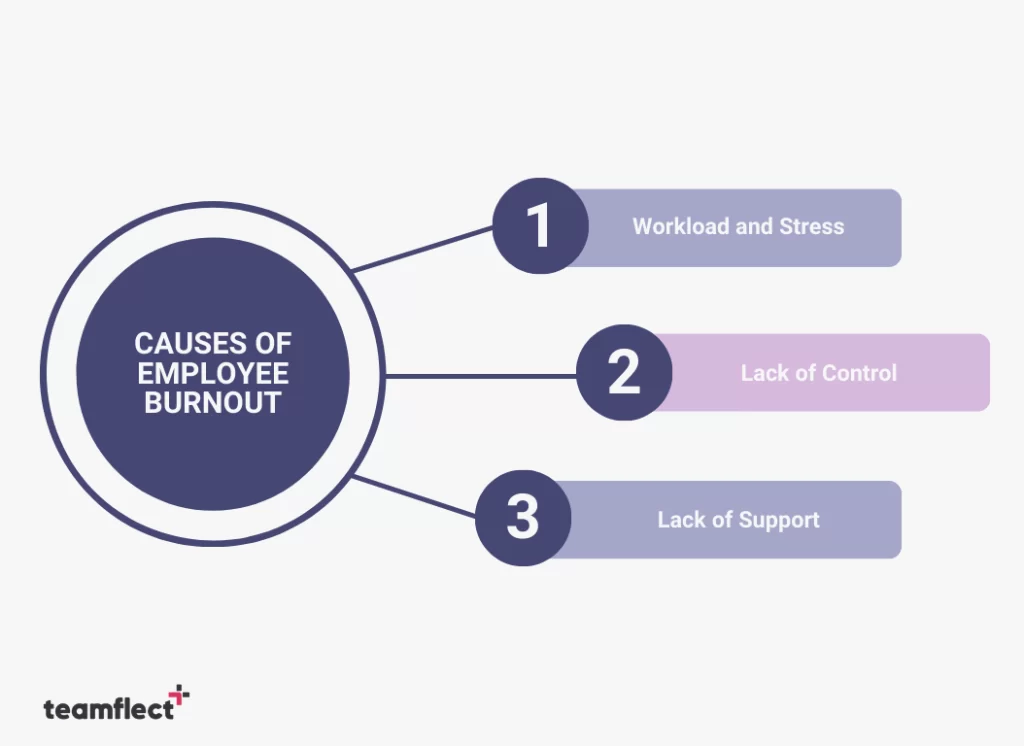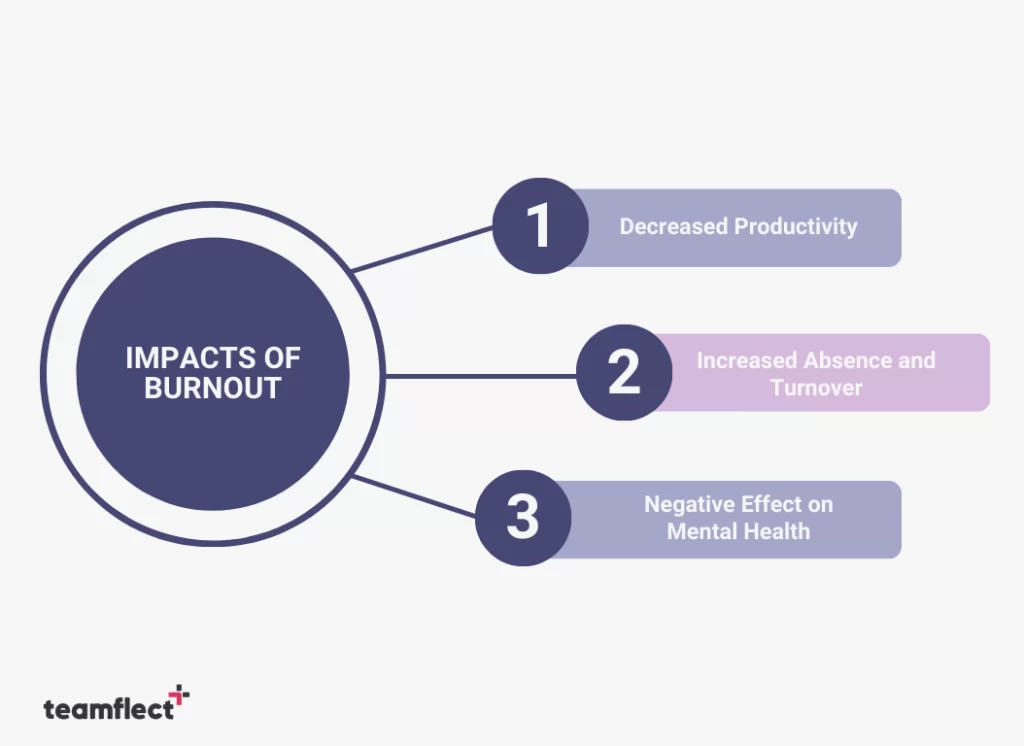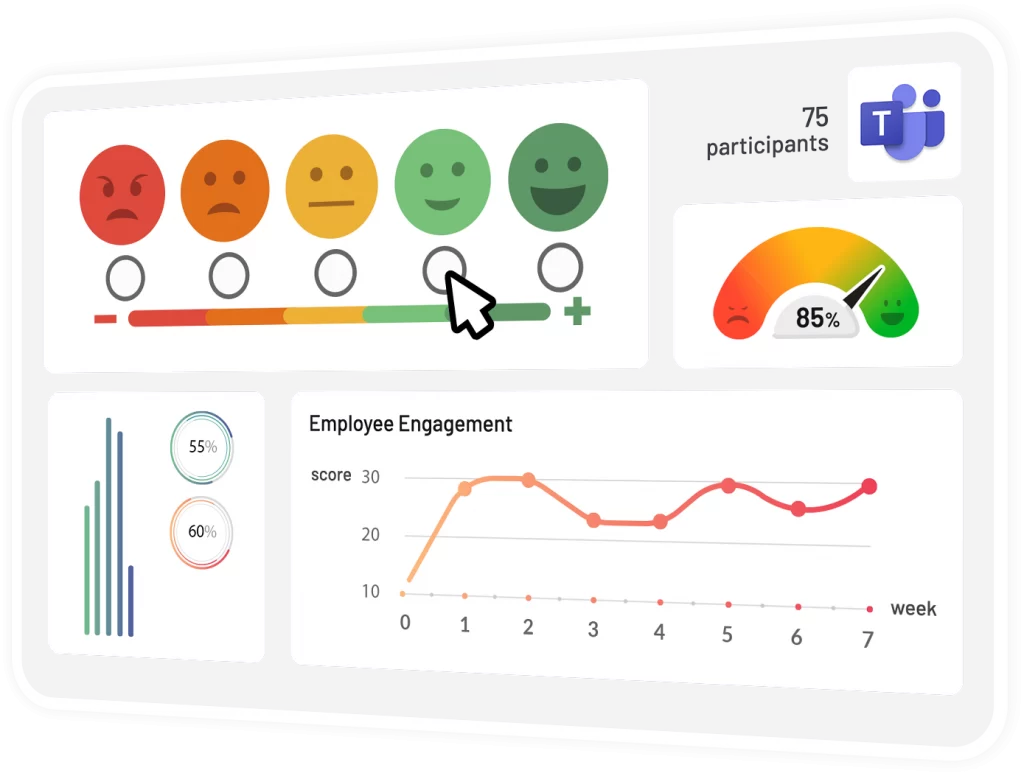Do you find it hard to concentrate on your job? Do you feel like being consistently productive is harder? If your answer is yes: you might have employee burnout! Although it’s not that simple to diagnose, employee burnout sure has its specific symptoms.
We know that employee burnout is a common issue in today’s fast-paced business life, but it can often go unnoticed until it’s too late. That’s why we wanted to create this guide to help you understand what employee burnout is, why it’s important to recognize the signs, and what you can do to help prevent it.
But before diving into the who’s and how’s, let’s define employee burnout. In general terms, burnout is a state of physical, emotional, and mental exhaustion.
Employee burnout is the state of constant exhaustion caused by long-term stress and pressure in the workplace. It’s a growing concern for employees and employers alike, and it can have serious consequences for both parties if left unchecked.
Recognizing the employee burnout signs is important because it can help you prevent it from worsening. Early intervention can make all the difference in helping an employee feel better, be more productive, and avoid long-term health consequences.
We aim to raise awareness of this significant issue and empower you to recognize the signs of burnout and prevent it. We’ll be covering common symptoms, causes, and impact, as well as strategies for prevention.
So, let’s dive in and learn how to spot employee burnout and what you can do to help!
Table of Contents
Common Symptoms of Employee Burnout
Physical Symptoms
Employee burnout, like all mental health issues, affects not only your emotional health but also your physical health. Although burnout can show itself in various symptoms in different people, we can categorize some general concerns.
Physical symptoms of employee burnout can include fatigue, headaches, sleep disturbances, and loss of appetite.
Don’t get us wrong, we’ve all had our fair share of mornings where getting out of bed feels like a struggle and starting work is the last thing we want to do. And we know how great it can feel to put in a solid effort on a project and then take a few days off to recharge.
However, employee burnout is a different kind of exhaustion. It’s not just a temporary thing that goes away after a vacation or when a project is finished. Instead, it’s a constant, heavy feeling that weighs on us mentally and physically.
These physical symptoms can be a sign that an employee is under too much stress and pressure, and they can have a negative impact on their overall health and well-being.
Emotional Symptoms
Emotional symptoms of employee burnout can include feelings of overwhelm, hopelessness, and frustration. It’s normal to feel stressed or drained from time to time, but when these emotions persist and interfere with daily life, it may be a sign of employee burnout.
Employee burnout does not only manifest itself as physical and mental exhaustion. It can also cause you to feel detached from your job and become insecure and skeptical about it. This is one of the key aspects of burnout and it can show as a shift in your feelings and attitudes.
For instance, if you’re working in sales, you may have once felt fulfilled by making a sale but now feel numb and less excited towards your customers. You might start to doubt if your work is making a difference. In short, things that used to inspire and drive you in your job no longer have the same impact.
Remember, it’s okay to not be okay. You can feel like you’re a failure who misses deadlines with no motivation to finish tasks, but all you need is professional help and compassion from your workplace.
Behavioral Symptoms
Behavioral symptoms of employee burnout can include withdrawing from colleagues, decreased motivation and productivity, and increased absenteeism. If your productive and cheerful employee is nowhere to be seen nowadays and left their place to a mourner –be on alert.
These symptoms can be a sign that an employee is feeling overwhelmed and struggling to cope with the demands of their job, resulting in burnout.
It’s also important to remember that everyone expresses burnout differently, and some people may not show any physical, emotional, or behavioral symptoms at all. The key is to be aware of the signs, check in on your employees, and prevent burnout from getting worse.
Causes of Employee Burnout

1- Workload and Stress
One of the biggest causes of employee burnout is workload and stress, as you can guess. When employees are overworked, under-supported, and constantly facing elevated levels of stress and pressure, it can take a toll on their physical, emotional, and mental well-being.
This can lead to feelings of overwhelm, frustration, and eventually, burnout. Being exposed to constant stress and pressure, or worse, mobbing from their workplace may dry employees emotionally.
A heavy workload and high levels of stress can contribute to burnout in several ways. It can lead to long hours, tight deadlines, and an overwhelming sense of responsibility, all of which can increase stress levels and make it difficult for employees to manage their workload.
2- Lack of Control
Another common cause of employee burnout is a lack of control over one’s job or workload. Feeling like you have no say in your job responsibilities, schedule, or how you approach your work, results in employee burnout.
People like to take control of their lives, and making sure your employees take initiative in their positions is essential. It’s important for employees to feel in control over their job and their workload.
3- Lack of Support
We all need support in our lives, both social and material. This goes for our professional lives too –we seek support from our peers, supervisors, and direct reports. A lack of support from colleagues, supervisors, or the organization can also contribute to employee burnout.
It’s important for employees to feel like they have a supportive network in the workplace, whether from colleagues, supervisors, or the organization. You might feel socially isolated or be lacking the resources you need to do your work –it doesn’t really matter: feelings of neglect and isolation lead to employee burnout.
Impacts of Burnout on Employees and Employers

Decreased Productivity and Performance
Although the worst part of employee burnout is your employee feeling draught, decreased productivity and performance is a close second. Surprise, surprise –a burnt-out employee is less motivated, productive, and collaborative.
When employees are struggling with burnout, they’re going to have a harder time focusing on their work and might make more mistakes. If they feel like they don’t have the energy to do their job, they’ll be less likely to get anything done at all.
You can also see this as decreased work quality, missed deadlines, and lower productivity levels, all of which can negatively affect the employee and the organization.
Increased Absence and Turnover
As we mentioned in our employee turnover rates post, decreasing turnover rates is crucial to a company’s overall success. Burnout can cause employees to take more time off work, either due to physical or mental health issues or simply because they can no longer handle the demands of their role.
Additionally, employees who are suffering from employee burnout may be more likely to leave their current role in search of a more fulfilling or less demanding position, or even a break from the business world.
This increased absence and turnover can significantly impact the organization, leading to increased costs, reduced efficiency, and decreased morale among remaining employees.
Negative Effect on Mental Health and Well-Being
Have you ever felt mentally and emotionally exhausted from work? That’s exactly what burnout does to an individual’s mental health and well-being –only in a consistent and heart-wrenching way. Burnout can lead to feelings of depression, anxiety, and hopelessness, and can even affect physical health as we mentioned before.
The long-term impact of burnout on mental health and well-being can be far more serious and far-reaching than you can imagine. That’s why it’s important for both employees and employers to take steps to prevent burnout and protect the well-being of all individuals involved.
How to Prevent Employee Burnout
Promoting Work-Life Balance
One important way to prevent employee burnout is to have a healthy balance between work and personal lives. It’s important to make sure your employees have enough time for their family, friends, hobbies, and other interests outside of work. On the contrary of our recruiting Gen-Z guide, they are not the only ones who care about work-life balance.
To create a stress-free workplace, employers should encourage employees to take time off when needed, and provide flexible schedules and resources—such as the option of working from home using a collaboration tool such as Microsoft Teams—to help them manage their workload.
Giving employees the opportunity to rest and recharge can help reduce employee burnout and promote a healthy work-life balance in your organization.
Boosting Employee Engagement

Another important strategy for preventing employee burnout is increasing employee engagement levels in your organization.
Engaged and invested people are less likely to experience employee burnout. Engaged employees tend to have a positive attitude towards their work, feel a sense of purpose, and enjoy the challenges and rewards that come with their role rather than being stressed about it.
You can increase employee engagement by creating a positive work environment, promoting open communication, and providing opportunities for growth and development. Additionally, recognizing and rewarding employee accomplishments can help to boost engagement and prevent burnout.
If you’re looking for a way to do all this and much more without a hassle, consider using an all-in-one employee engagement tool such as Teamflect.
Teamflect is a user-friendly and intuitive software that can help you conduct all your management without even leaving Microsoft Teams. You can use Teamflect to send recognitions, effectively communicate, give constructive feedback, and much more:
- Automated performance review cycles
- Customizable employee recognitions
- OKR management
- Task & Goal Tracking
- Feedback templates



